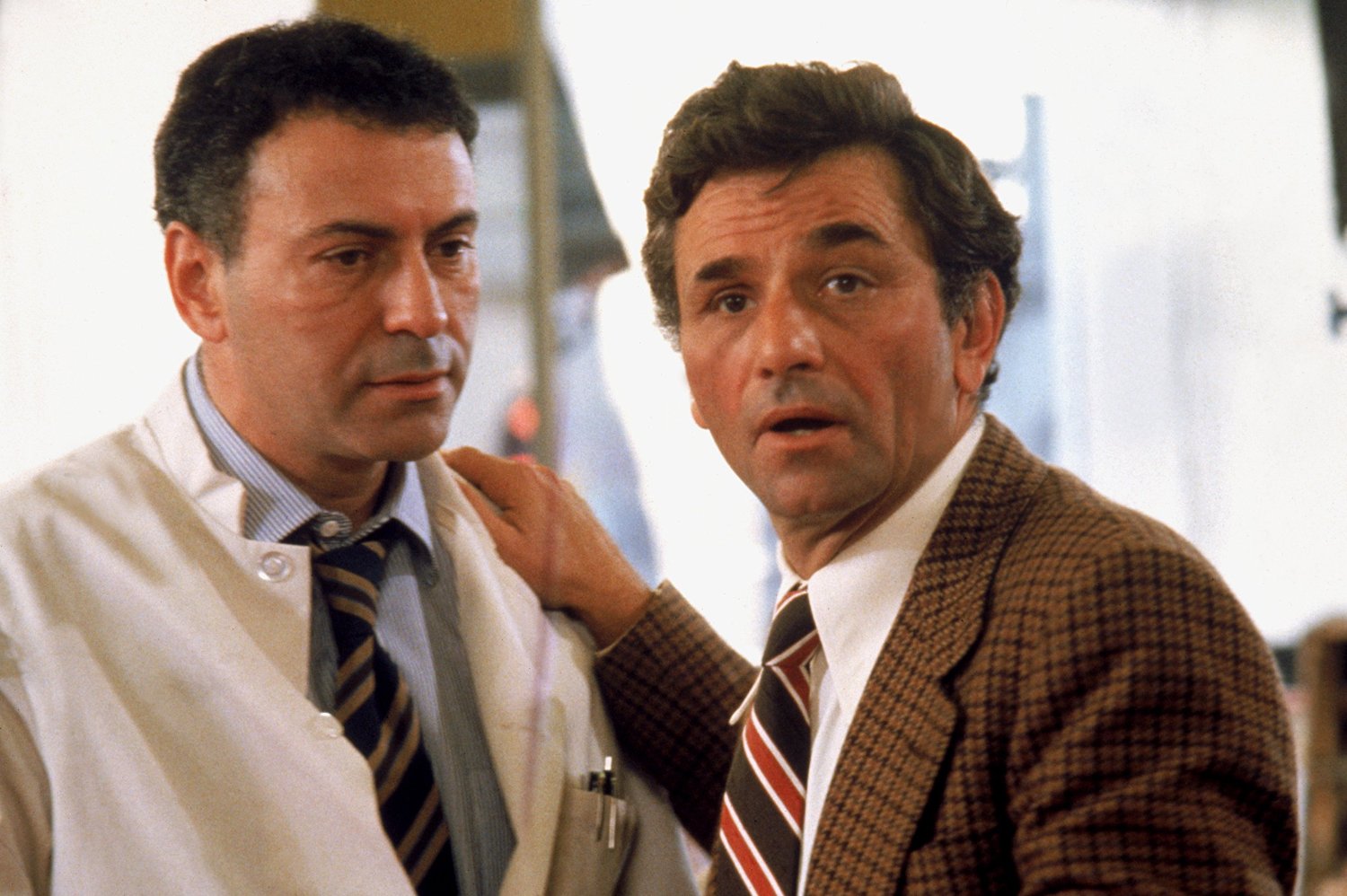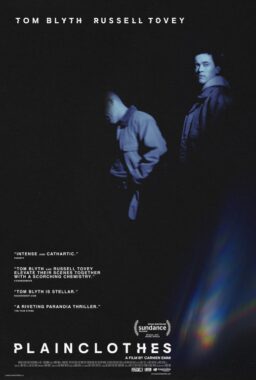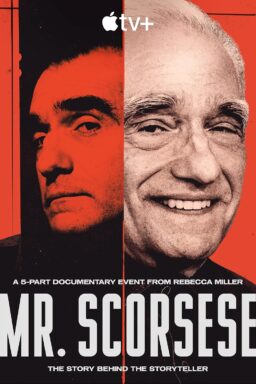The last few weeks have been an extraordinarily grim period for
world history, in which even those with the sunniest of attitudes may be
finding themselves overwhelmed with the violence, cruelty and meanness that
seems to come relentlessly from all directions. In other words, it is the
perfect time to take a break and sit
down to watch a great comedy. Of course, trying to recommend one is itself
fraught with difficulties because, while people all over the world can usually
agree on things that are sad or exciting or happy, trying to get even a handful
of people to agree on what is funny is generally an exercise in futility—some
will continue to argue over whether Chaplin was better than Keaton or
vice-versa, and whether the filmography of Jerry Lewis is genius or grotesque.
In a fortuitous move, the good people at the Criterion Collection have just released one of the few movies that has the ability to rend anyone who sees it virtually helpless with laughter. This
would be “The In-Laws,” a wild 1979 romp that became a cult classic from
practically the moment that it was released and has subsequently grown to be generally regarded as one of the all-time
classics of screen comedy. When I first saw it at the age of eight with my family
at the long-defunct Woodfield Theaters in the suburbs of Chicago, I probably
didn’t get half the jokes at the time and I still thought it was hysterical.
Upon subsequent viewings—and believe me, there have been plenty of those—I
would not only get more of the jokes but I would gain an enormous appreciation
for how all of its oddball elements come together perfectly.
The film was the brainchild of Andrew Bergman, a writer whose
dissertation for his PhD in history from the University of Wisconsin-Madison
was an incisive study on Depression-era Hollywood that was later published as
“We’re in the Money: Depression America and Its Films.” He went to Hollywood to
break into the film industry and first gained attention when a Western spoof
that he wrote named “Tex X” was acquired by Mel Brooks, and, after being
rewritten by a group of screenwriters that included Brooks and Richard Pryor,
transformed into the comedy hit “Blazing Saddles.” Although the film was
celebrated as Brooks’ baby in the public eye, insiders were aware of Bergman’s
original contributions, and so he began to attract interest as well.

According to the audio commentary on this Criterion release,
Bergman claims that the original genesis of “The In-Laws” was to create a
sequel to “Freebie and the Bean,” a raucous buddy cop comedy featuring Alan
Arkin and James Caan that was a hit in 1974. This one would team Arkin with
Peter Falk, then a big star in his own right on “Columbo.” Though the idea of
doing a sequel to “Freebie and the Bean” did not really interest any of them,
the notion of teaming up Arkin and Falk—who had never appeared together
before—did, and Bergman set off to create a screenplay that would make the
most of the pairing. After several false starts, he came up with a script that
won the approval of the two actors and also attracted director Arthur Hiller,
whose career to that point had included such hits as “Love Story” and “Silver
Streak” as well as recent flops like the misfired biopic “W.C. Fields and Me”
and the killer bat epic “Nightwing.”
The leaping-off point of the film is the imminent marriage of the
daughter of the exceedingly normal and quiet Manhattan dentist Sheldon Kornpett
(Arkin) to the son of Vince Ricardo (Falk), who has been away on business so
frequently that Sheldon has not yet actually met his future in-law. Finally,
the two families get together for a dinner during which Vince regales them with
an increasingly insane story about a nine-month period he spent working in the
jungles of Guatemala, during which he claims to have seen “tsetse flies down there
the size of eagles” swoop down and carry off children. (Alas, nothing could be
done because “there is a tremendous amount of red tape in the bush.”) Fearing
that the acorn doesn’t fall far from the tree, Sheldon begs his daughter to
call off the engagement, but she and his wife (Nancy Dassault) eventually calm
him down.
He gives Vince a second chance the next day when his pending
in-law drops by Sheldon’s office and asks him to do one small favor—go over to
Vince’s office, break into his safe and retrieve the bag inside. Sheldon
reluctantly agree and quickly finds himself being chased by a couple of
gun-toting thugs before he catches up with Vince and the two escape following a
brief shootout. As Vince explains, he belongs with the CIA and is working on a
case involving a plot based out of Central America to steal engraving plates
from the U.S. Mint and cause worldwide inflation as a way of obliterating their
own debt. Alas, when the CIA shot down his plan, which involved actually
stealing the plates from the mint and offering them up for sale, for being too
dangerous and crazy, Vince took it upon himself to pull the job on his own—one
set of plates is in the bag and the other is now hidden in Sheldon’s basement.
When it is inevitably discovered, Sheldon now finds himself being pursued by
Treasury agents, but Vince insists that he can clear it all up with a quick
jaunt to Scranton, Pennsylvania. Needless to say, things get far more complicated
than that as Sheldon is instead dragged south of Honduras and learns there
is a very good chance that Vince was drummed out of the CIA for mental health
reasons.

One of the problems with a lot of contemporary comedies is the
essentially ramshackle nature of their construction—too many of them are little
more than an assemblage of gags and improv sessions, tenuously
linked at best. Granted, comedy films as a rule should have a loose
and spontaneous feeling to them, but, too often, one gets the feeling they are literally being made up as they go along. One of the great things
about “The In-Laws,” however, is that it is a perfectly constructed screen
comedy—one in which every single element fits together with jigsaw-like precision—while
still conveying a freewheeling attitude throughout. It starts off with a basic
premise that most anyone who has seen their child get married can relate to—the
anxiety felt over merging their family together with a bunch of strangers—and
then builds upon Sheldon’s increasingly bizarre dealings with Vince until it
finally gets to the point where the only possible way to survive is to
simply accept the craziness. As things progress, the story gets more
convoluted, including chases, an assassination and a meeting with the deranged
general (Richard Libertini) behind the inflation plot (not to mention his
trusted advisor, a Señor Wences-style hand puppet). But Bergman pulls off a considerable trick—he not only prevents it from going completely off the
narrative rails but constructs it in such a way that for most of the time, it’s indeed plausible that the CIA’s explanation for Vince’s mental stability
may be true after all. The script even contains one of the rarest sights in the
entire genre of screen comedy—an ending that wraps everything up in an
eminently satisfying manner, while still scoring a few final chuckles in the
bargain.
Not that the film has exactly been hard up for laughs at that
point. “The In-Laws” is stuffed with comedic bits all the way through, ranging
from slapstick to bizarre wordplay to pure farce, and virtually every single
one hits perfectly—this is one of those movies where you have to watch it a
second time in order to catch the jokes that you missed the first time around
because you were laughing so hard. The first big scene in the film between
Arkin and Falk—the dinner sequence where their characters first meet and Arkin
is increasingly perplexed by the nonsense Falk is spewing but is too polite to
call him on it—is such a masterpiece that it should be taught in classes on how
to write and perform comedy. The writing is, of course, spectacular—there are
more genuine laughs in this one sequence than in most full films that purport
to be comedies—but the staging is equally impressive. The
insanity of Falk is complemented by the way that everyone else plays it as straight-faced as possible, to prevent it from going too
far.

This scene would be the unquestioned highlight of most comedies
but “The In-Laws” is just getting started: There is the scene in which Falk
tells his cab driver (David Paymer in his film debut) about working in the CIA.
(“The benefits are terrific. The trick is not to get killed. That’s really the key
to the benefit program.”); the scene in which Falk tries to explain to
Arkin what is going on in a crowded restaurant and admits that the Bay of Pigs
invasion was actually his idea; the car chase sequence in which Arkin
eludes his pursuers by pulling his car into what turns out to be an auto
painting shop. (“I HAVE FLAMES ON MY CAR!”); the flight down south on a
chartered plane flown by a couple of Chinese men (James Wong and Danny Kwan)
who do not let their lack of English prevent them from performing all the
pre-flight rituals, including explaining how to operate the flotation devices; the climactic scene involving the mad general, a finally laid-back
Arkin, an unusually nervous Falk and a firing squad serenading them with a
choral rendition of “Trees” in Spanish. (In a previously unpublished essay
printed in the booklet accompanying the Blu-ray, Arthur Hiller talks about how
this scene developed.) Then, of course, there is the legendary “Serpentine!”
sequence that somehow manages to top even the aforementioned dinner sequence in
terms of sheer hilarity. Even the offhand jokes are great—there is a moment
where Arkin, having snuck away from Vince to contact the CIA guy, returns and
claims he went to a newsstand “but all they had was Hustler in Spanish—El
Hustlero” that left me helpless with laughter when I was eight and continues to
crack me up to this day.
As for the original impetus of the film—to create a vehicle that
would team up Arkin and Falk—the two stars play off of each other so
brilliantly that you would think that they had been doing so for their entire
careers. The combination of Arkin’s mild-mannered hysteria and Falk’s crazed
affability is utterly inspired. Both actors had long careers filled with any
number of highlights but if I had to pick a single favorite performance for
each of them, I would almost certainly cite their contributions to this films
as their respective high-water marks. Although the film is a star vehicle for
the two of them, it is filled with a number of good performances
in the smaller roles—even the completely straight-laced turns are nicely
done—and the appearance by the late Libertini in the late innings gives the
film just the final jolt of madcap energy it needs that
you have to admire Arkin and Falk for somehow keeping a straight face (more or
less) while sharing the screen with him.
With the critical and commercial success of “The In-Laws,” one
might have thought that people would be eager to continue pairing Arkin and
Falk on the screen, but they would only co-star in one more film together, “Big
Trouble,” a 1985 comedic riff on the film noir classic “Double Indemnity,”
written by Bergman. If you are wondering why you haven’t heard of this one, it
is because Bergman was also the original director until he was fired partway
through the production and replaced by that well-known comedic genius John
Cassavetes (in what would prove to be his last directorial effort)—Bergman took
his name of the script and the movie itself tanked. Beyond that, Arkin and Falk
would continue on with their careers as two of the most beloved actors of their
time: Arkin would go on to win a long-overdue Oscar for “Little Miss Sunshine”; Falk would return to the role of Columbo before passing away in 2011.
Hiller would go on to direct a number of films before finally retiring from the
business in 2006, but nothing he did before or after “The In-Laws” would come
close to topping that achievement.
As for Andrew Bergman, he would have a frustrating career. Two years after “The In-Laws,” he made his directorial
debut with the screwball farce “So Fine,” which was concerned with a professor
(Ryan O’Neal) who saves his father’s fashion business by inadvertently
inventing bottomless jeans. He wrote the screenplays for the amusing “Oh God,
You Devil” (1984) and the Chevy Chase hit “Fletch” (1985), but did not attempt
to direct another film until 1990, when he convinced Marlon Brando (apparently a
huge fan of “The In-Laws”) to spoof his famous performance in “The Godfather”
opposite Matthew Broderick in the delightful comedy “The Freshman.” He
contributed to the screenplay for the soap spoof “Soapdish” (1991), and wrote
and directed the hit romantic comedies “Honeymoon in Vegas” (1992) and “It Can
Happen to You” (1994). Disaster struck when he directed an adaptation of Carl
Hiassen’s novel “Striptease” in 1996, a star vehicle for Demi Moore that had
the misfortune to come out at a time when audience apathy towards her was at
its peak, especially when news of her record-breaking acting fee got out. That
film is undeniably awkward but nowhere near as bad as its reputation might
suggest—Burt Reynolds has a turn as a lecherous politician that is one of the funniest
performances of his career. His last film credit to date, directing the
Jacqueline Susann biopic “Isn’t She Great?” (2000), is actually as bad as its
reputation—though it disappeared so quickly that it barely had time to garner a
reputation—and since then, nothing. Well, there was the credit he received
a few years later when Hollywood, in its infinite wisdom, decided to remake
“The In-Laws” with Michael Douglas and Albert Brooks in the roles played by
Falk and Arkin. Despite the presence of one of the funniest people in the world
in one of the leads, the result was a mirth-free mess that only underscored
just what a tremendous achievement the original film really was.
As for this Blu-ray itself, the disc offers up all the main extras
from the film’s long-ago initial DVD release, including a funny and interesting
audio commentary featuring Bergman, Arkin, Falk and Hiller reminiscing and
kibitzing throughout. Among the new supplements, there is an interview with
Arkin that goes into more depth about his experiences with the film; “In
Support of ‘The In-Laws,’” another interview featurette focusing on supporting
cast members, Ed Begley Jr., Nancy Dussault, James Hong and David Paymer; a
booklet containing the aforementioned memoir by Hiller; and an appreciation of
the film by comedy writer Stephen Winer. Of course, for most fans of the film,
just the chance to have it on Blu-ray will be enough to inspire them to rush
out and get a copy. For those that do, all I can say is, “Serpentine!”












